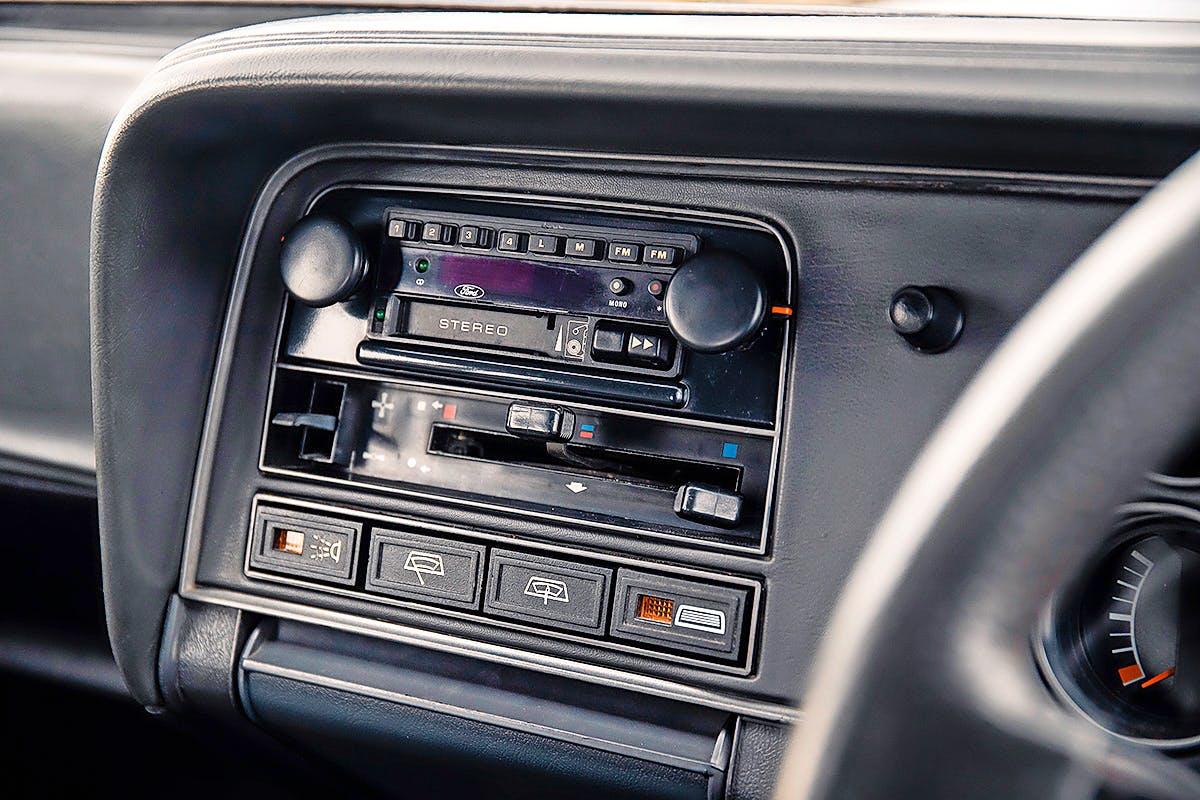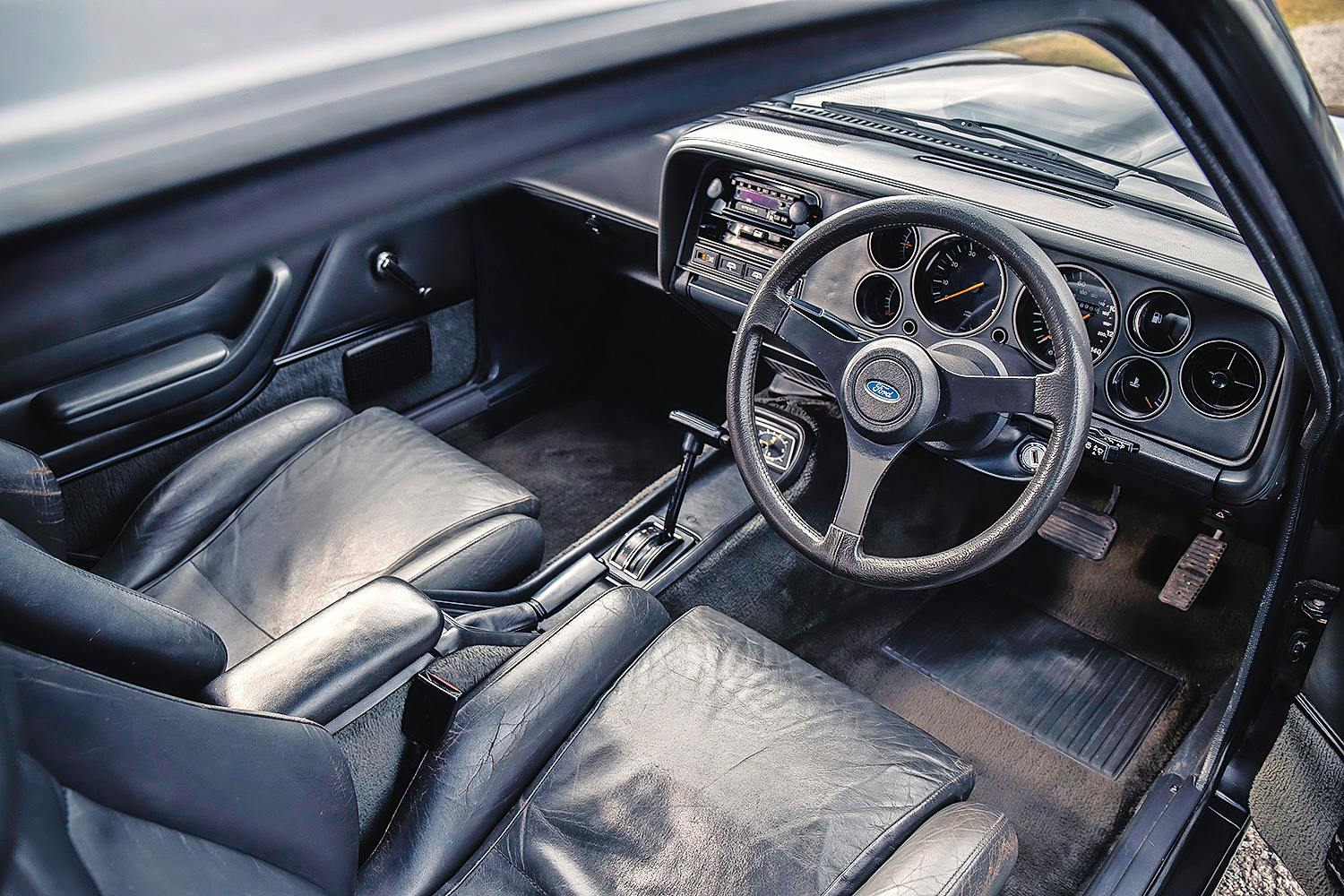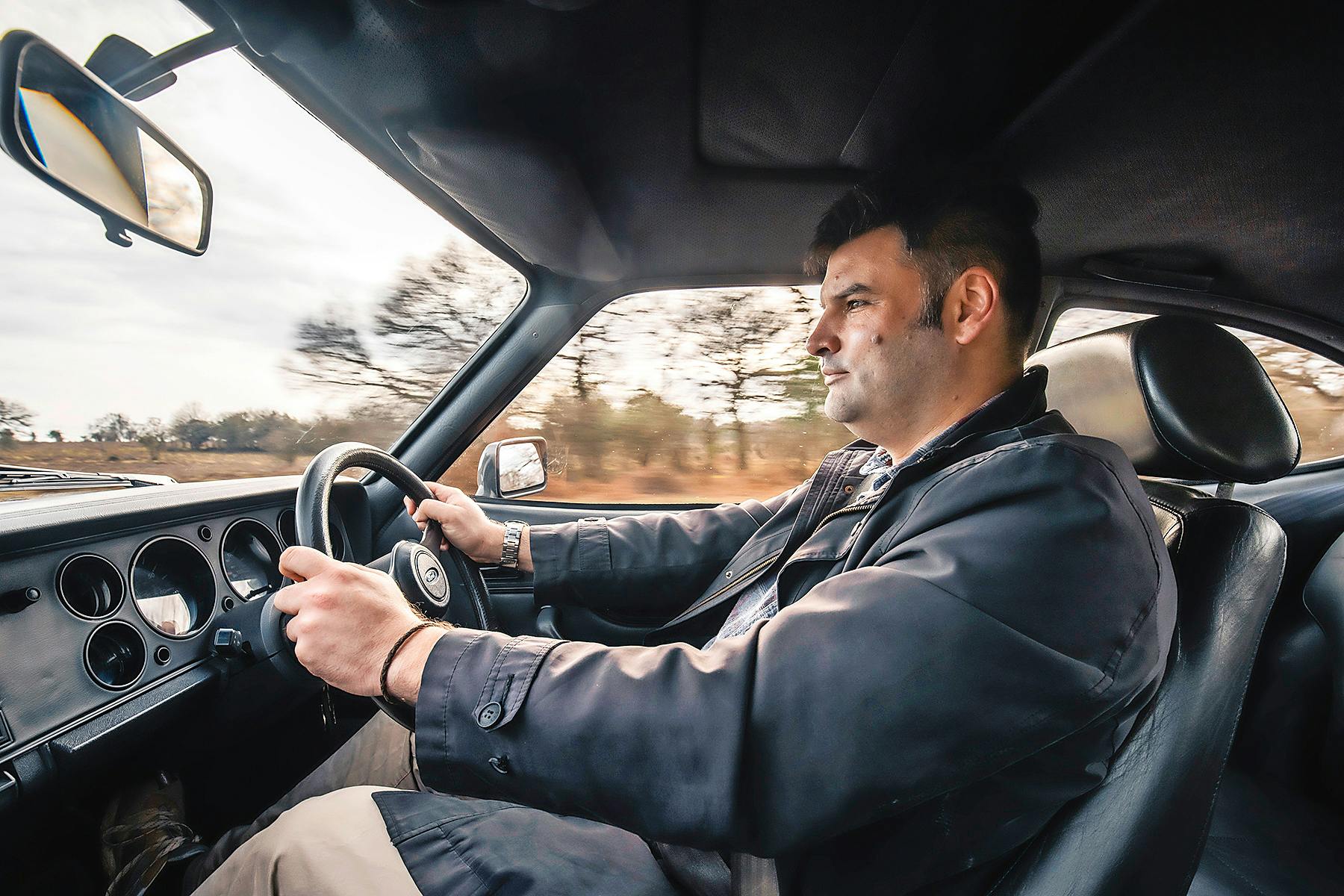Across the Pond: Henry Ford II’s personal Capri 2.8 is a grand ’80s tourer

Tracy Letts is a great actor. A Pulitzer Prize and Tony Award winner, no less. But to gearheads he’s best known as the man who portrayed Henry Ford II in Le Mans ’66. And yet as I power through the undulating roads of the New Forest in this unique built-for-Henry Capri 2.8 Injection, fresh from one of the most sympathetic renovations I’ve ever seen, I find myself starting to question his—or perhaps director James Mangold’s—accuracy. In the film, “HFII” is portrayed as the embodiment of brash, lowest-common-denominator corporate Americanism. A cigar-chomping boardroom tyrant, angrily dismissive of European car culture, who needs his arm repeatedly twisting by Lee Iacocca and Carroll Shelby in order to approve the Mustang and GT40. The man who calls the Aston-driving James Bond a degenerate.
And yet, as I plant my right foot deep into this car’s lush green carpet, hear the Falstaffian wuffle of the engine overlaid with fluttering valvegear, smell the reek of high-quality leather, and see the great domed bonnet bulge shimmer ahead of the windscreen as the nose rises, all sensory cues are telling me that I’m in a William Towns-era Aston V8. A discreet high-quality carriage for a moneyed gentleman who enjoys driving himself around. Other drivers give the thumbs-up to what appears to be a nice old Capri, a mass-produced reminder of their youth in the U.K. But what I’m experiencing is a privileged glimpse into the secret world of the man who originally creased the bolsters of this specially-made leather driver’s seat.
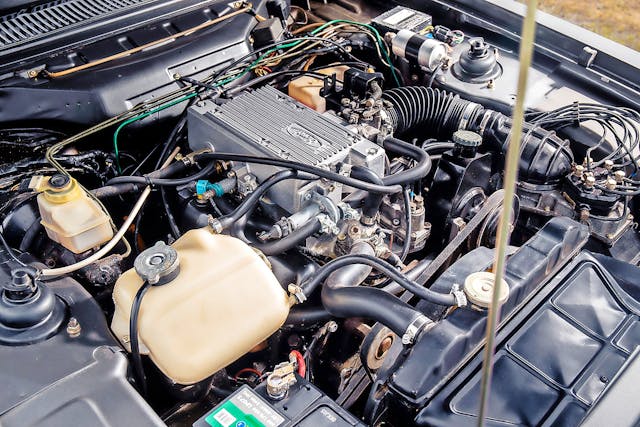
While his grandfather, company founder Henry Ford, was obsessed with Americana, preserving and rebuilding a Georgia plantation, and pioneer-era villages; Henry Ford II took rather more after his father. Edsel Ford was enamored of European sports cars, was the first to import an MG into the United States, expanded overseas production, and visited Italian-inspired styling on Fords before his 24-year presidency of the Ford Motor Company was curtailed by his untimely death in 1943.
Henry Ford II took control of Ford Motor Company in 1945, and while he cultivated the public persona that Letts and Mangold picked up on in their film as an aggressive hirer-and-firer at the top of an all-American enterprise, the contrasting private man was a Europhile sophisticate whose tenure at the top saw the attempted Ferrari buyout, the acquisition of Ghia, the De Tomaso linkup, and the establishment of design centers in Italy, Germany and the U.K. He bought two English properties—an apartment in Eaton Square, Belgravia, and the 16th Century Turville Grange, a stately home in Berkshire. He rode horses, befriended the Royal family, and secretly allowed Princess Anne to drive Jackie Stewart’s Tyrrell at Silverstone. While a chauffeur-driven Bentley stood by in the garages of Turville Grange, when navigating London, Ford preferred to use an anonymous Honda moped.
For longer trips, he’d borrow Fords from the nearest dealership. But in the late 1970s, he asked his friend Walter Hayes, the GT40 mastermind who was at that point vice president of Ford Europe, to build him “something special, a bit unusual,” for personal use when in the U.K. The result was a one-off automatic version of a droop-snoot Escort RS2000, in Roman Bronze with leather interior trim and deep-pile carpets. By 1981, made a KBE by HM the Queen, Ford announced his retirement and made Turville his main residence. And he fancied something to succeed the old luxury RS2000. A long-legged automatic grand tourer to holiday in places like Scotland, and take up to Durham for shooting with Lord Lambton.
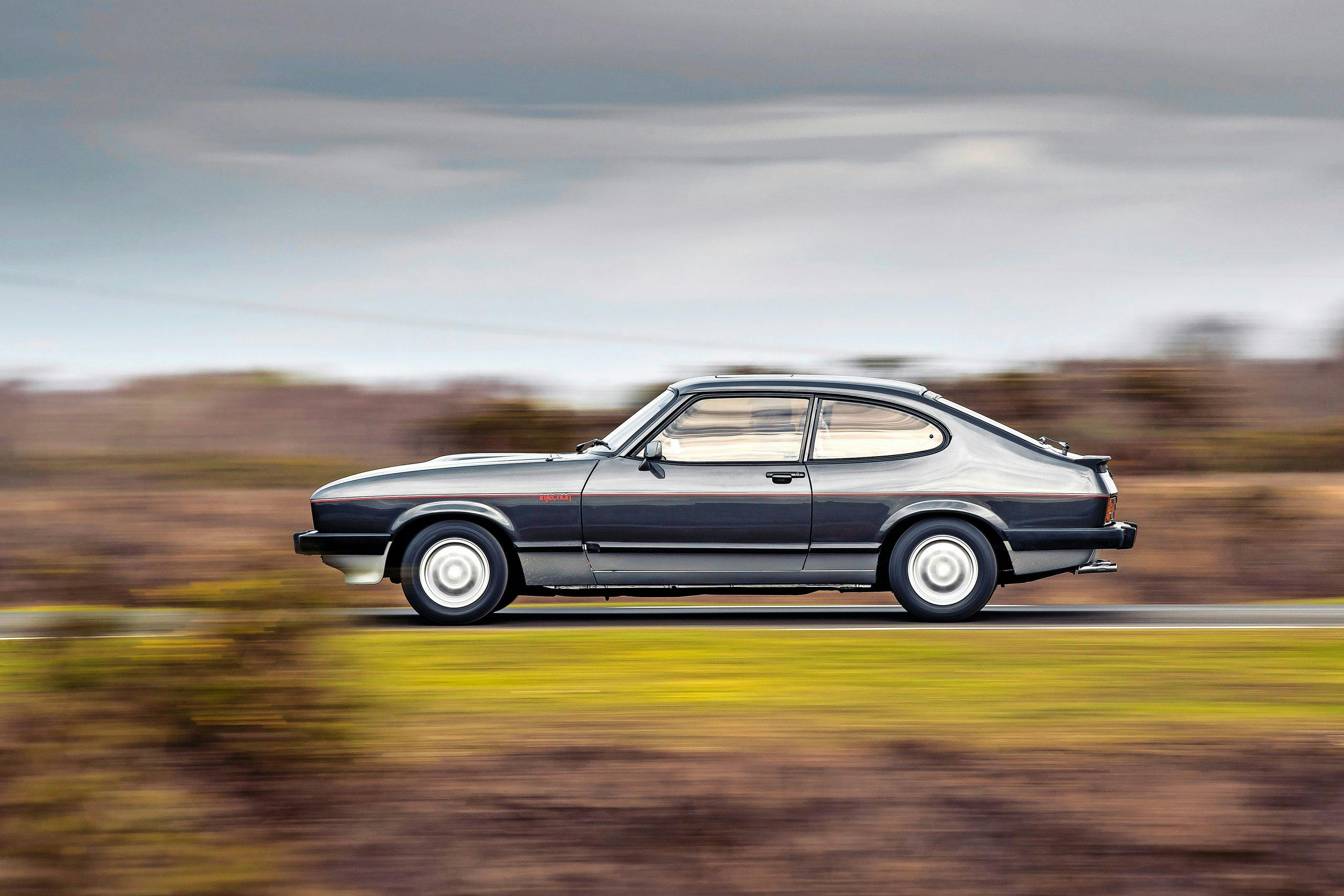
This special 1981 Capri was the result. Henry requested it once again via Hayes, having become enamored by the new Capri 2.8 Injection, the first fruit of Rod Mansfield’s new Special Vehicle Engineering division. But while the pairing of Ford’s basic 109-bhp “Cologne” V-6 with a Ford C4 three-speed automatic gearbox and a single downdraught Holley-Weber 5200 carburetor was commonplace on the U.S-market Mercury-badged Capri, the new European-market high-revving 160-bhp Bosch-K-Jetronic-injected version was only supplied with a manual. The automatic Ghia V-6 died when the old Essex 3.0-liter was withdrawn. SVE hand-built a pilot automatic Capri 2.8 Injection at Dunton before creating this one, just to be sure the concept worked. Whether that first car suffered teething troubles or not is unknown, but I can find no fault with SVE’s work here.
Accelerate hard, tempt kickdown, and once again I’m reminded of that Aston V8, as the chattering valves are underpinned by a potent boom from the exhausts. The three-speed gearbox’s ratios are long but they don’t detract much from the 2.8’s sporting character. It doesn’t hunt unnecessarily, preferring to hold gears as the V-6 bellows all the way through its power band, the car squatting on its leaf-sprung live rear axle as it surges forward at pace. It’s far easier to stretch the Cologne V-6’s legs with this three-speeder than it is in the later four-speed Granada Cosworth.

The driving seat feels both comfortable and commanding. The Capri always had an excellent, arms-and-legs-straight driving position, but early 2.8 Injections were criticized for being a little too Spartan inside, with narrow, firmly-bolstered seats. To accommodate Henry’s larger frame, this unique wide set was constructed for the car, and again they add to its grand touring abilities—later evolutions of 2.8 Injection featured wider seats, too. A soft, comfortable place to recline and watch hundreds of miles roll by. The leather continues on the steering wheel and dashboard facia, and the sense of refinement is completed with deep-pile lambswool carpets. Together with perforated headlining, the overall interior ambience is reminiscent of an ’80s Porsche or BMW—not flashy, but of a very high quality that immediately impresses itself on your nose and fingertips.
Unfortunately, the old Aston comparisons start to dissipate as I approach motorway speed. Surprisingly the three-speed isn’t undergeared for cruising—at 60 mph it’s turning over at 3000 rpm and 70 only needs another 250. Rather, it’s the glasshouse of the aging ’60s shape that’s at fault. Wind whirls around the A-pillars and roof guttering, drawing my attention to the way in which the high-quality leather butts up against some shockingly cheap and ill-fitting standard Ford pillar trims that seem at odds with the attention to detail elsewhere in the cabin.
It’s at its happiest attacking New Forest A-roads at 60 mph. I have to be careful as to how fast I enter corners—the firmly-sprung throttle pedal is tricky to meter nuanced levels of power through, and its gait shifts alarmingly on its live rear axle if too tight a bend is taken a little too fast for comfort. The slightly-assisted steering is tactile and communicative though, and brakes are strikingly powerful for a car of this era, so it’s easy to bring back under control. But Capri 2.8 Injections are thoroughbreds with a bloodline stretching back to the RS2600 racers that HFII and Walter Hayes enthusiastically followed as they gave Porsche and BMW a bloody nose. With pedigree like that, perhaps we should compare Capris of this ilk with more exalted company anyway?
As I park this Capri up for the last time, I find myself wondering how Henry Ford II must have felt when looking at it. It would have often found itself parked among luxury marques, and yet none of those cars’ owners would have seen their names on the grille badge, or felt themselves to be personally instrumental to the model’s existence. They were customers, whereas in 1981 the newly-retired Henry would have looked upon this car as its creator. A sense probably more satisfying than even contemplating his Bentley.
And having driven this car, I also think back to Tracy Letts’ portrayal of HFII and find them even trickier to square with each other. This was the creation of a forward-looking man who loved motorsport and coveted European grand tourers, not someone left sobbing after a fast drive in a GT40.
Corporate America may have known a different man, but the inward satisfaction afforded by this unique Capri 2.8i—and the fact that in 1984 he repeated the exercise with a then-new Sierra XR4i—paints a quiet visionary every bit as significant as his forebears.

Renovating the HFII Capri
Editor’s Note: This Henry Ford II-owned Capri sold at auction in late April for £25,250, after this photoshoot and interview was conducted. As such, the vehicle has found its way to a different owner than indicated below.
“I had to make sure the renovation was sympathetic, not a restoration that wiped out its originality and patina,” says owner Andrew Hellyar of the Henry Ford II Capri. “As a result the seats have just been treated with hide feed, but I haven’t repaired the bolster wear—Henry himself wore those bolsters, that’s history! It had been fitted with a modern stereo at some point, so I sourced a genuine Ford item from another Capri Injection, admittedly a few years younger than this one but it’s the same type.
‘The main issues were with the engine. There was a misfire in cylinder number six, a compression test revealed that it only had 60 psi, and excess carbon build-up on the exhaust valves was the root cause. Additionally, the fuel injection warm-up regulator was defective and the inlet manifold gasket had deteriorated.
‘While I addressed the underbonnet damage caused by the leaking fuel injection system, stripping and repainting the whole front quarter, the Bosch K-Jetronic unit was rebuilt by Tom Scott Gilley, a 31-year-old tank mechanic with an incredible, encyclopedic knowledge of Capris. Martin Pewsey of Capri Gear (Lincolnshire, U.K.) was instrumental in finding replacement parts too, little underbonnet details that are hard to get right nowadays, like the anodized bonnet support strut, and the original tower hose clips rather than the jubilee clips they usually end up replaced with.’
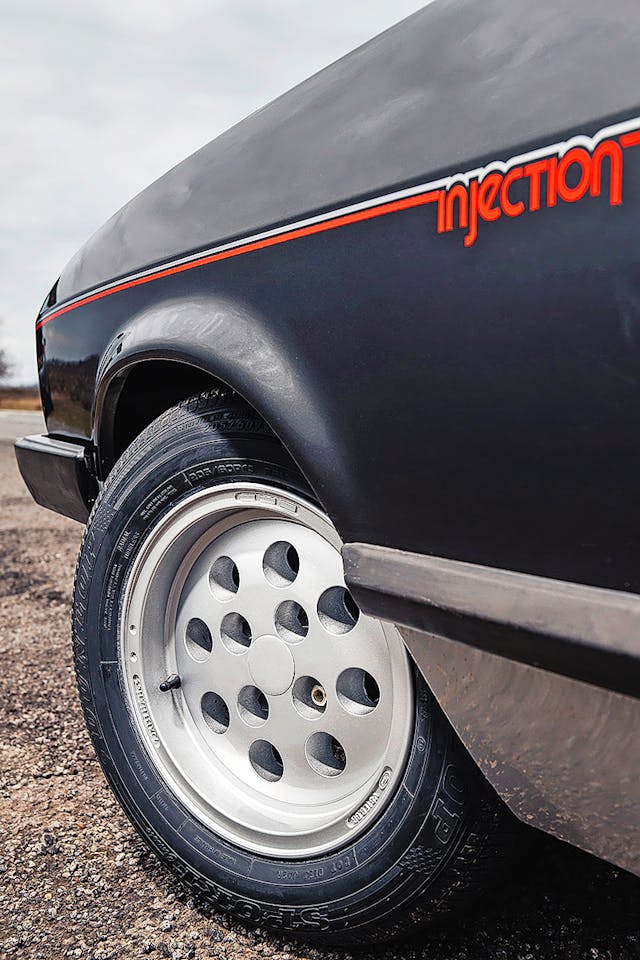
1981 Ford Capri 2.8 Injection
Engine: 2792 cc V-6, OHV, Bosch K-Jetronic fuel injection
Power and torque: 160 bhp @ 5700 rpm; 162 lb ft @ 4300 rpm
Transmission: Three-speed automatic, rear-wheel drive
Steering: Power-assisted rack-and-pinion
Suspension Front: MacPherson struts, lower track control arms, coil springs, telescopic dampers, anti-roll bar
Suspension Rear: Live axle, semi-elliptic leaf springs, staggered telescopic dampers, anti-roll bar
Brakes: Discs front, drums rear, servo-assisted
Weight: 1130 kg (2491 lb)
Top speed: 127 mph
0-60 mph: 7.9 sec (figures for 1981 manual example)
Approximate value now: £30,000 ($42,000)
